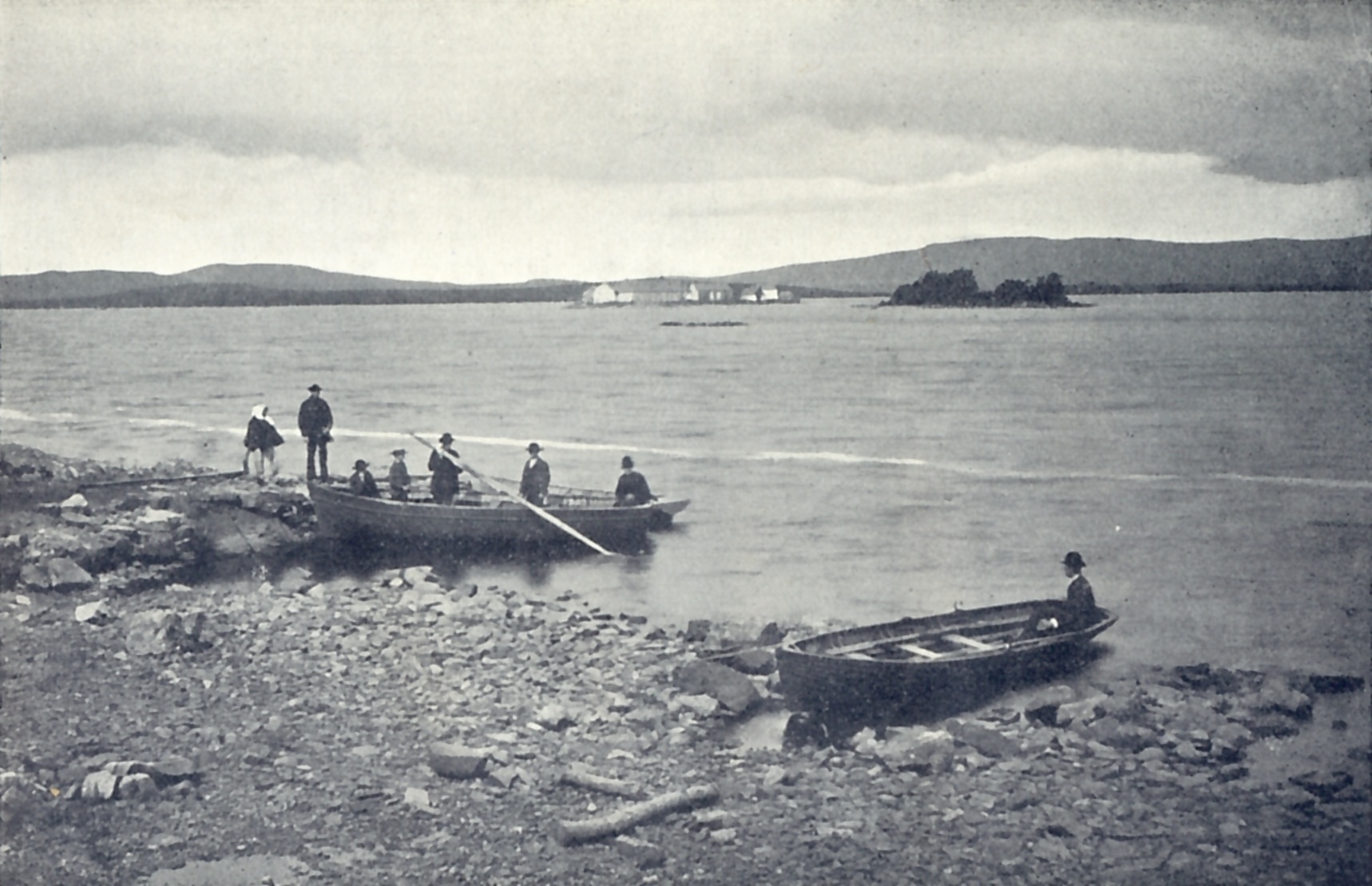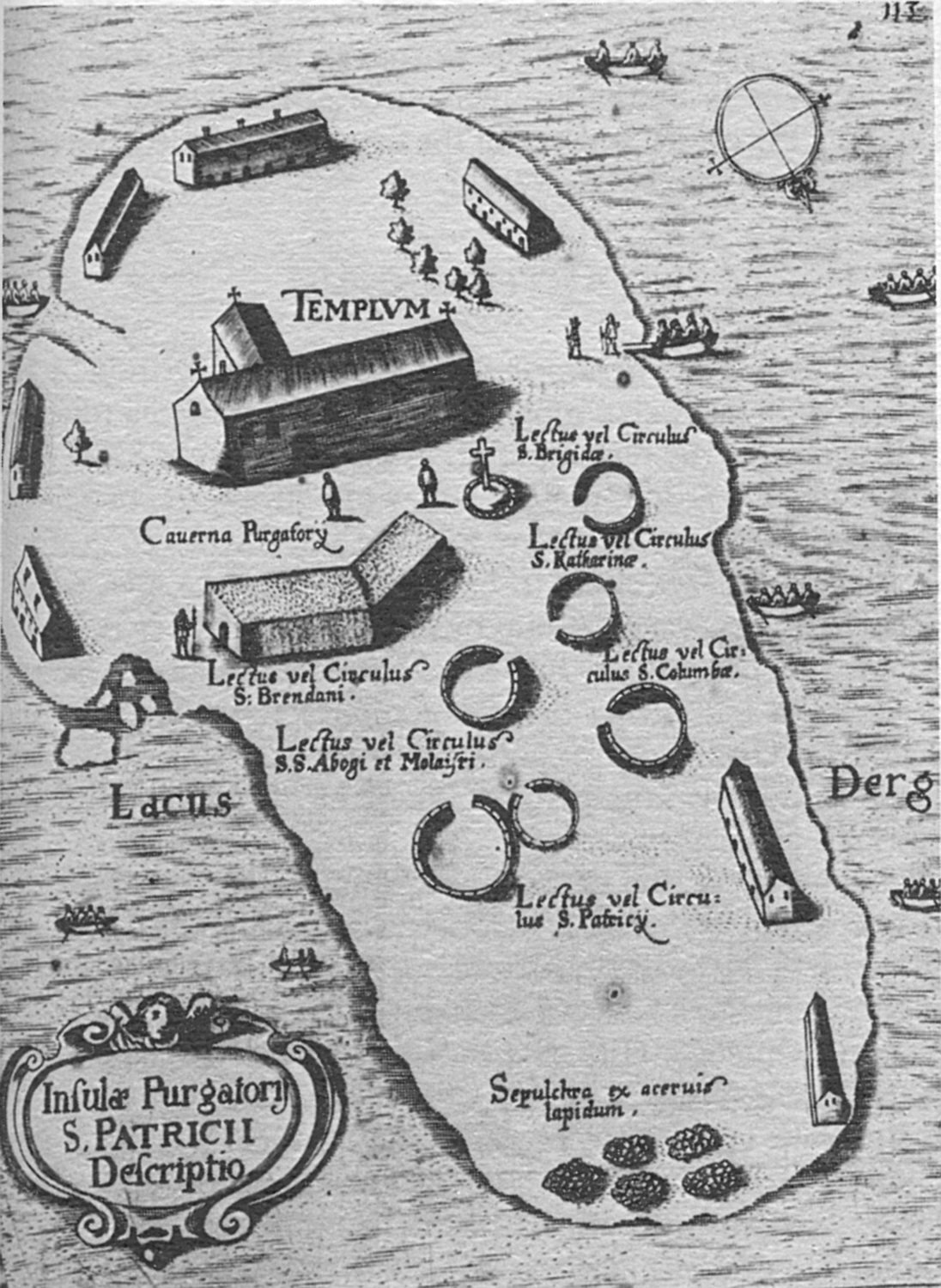Lough Derg (Donegal) on:
[Wikipedia]
[Google]
[Amazon]
Lough Derg or Loch Derg () is a
 The traditional three-day pilgrimage follows a one-thousand-year-old pattern. It begins on any day between 1 June and 13 August and lasts three days during which participants may only have one Lough Derg meal each day (black tea/coffee, dry toast, oat cakes, water). On arrival on the island, participants remove footwear and socks before commencing vocal prayers, walking around the island. A 24-hour night vigil then takes place on the first night. Generally, pilgrims depart on the morning of the third day having slept on their second night. They complete their pilgrimage fast at midnight the day of departure. The pilgrimage is suitable for persons over 15 years. Pilgrims must be able to walk and kneel unaided and be physically able to undertake the fast.
The traditional three-day pilgrimage follows a one-thousand-year-old pattern. It begins on any day between 1 June and 13 August and lasts three days during which participants may only have one Lough Derg meal each day (black tea/coffee, dry toast, oat cakes, water). On arrival on the island, participants remove footwear and socks before commencing vocal prayers, walking around the island. A 24-hour night vigil then takes place on the first night. Generally, pilgrims depart on the morning of the third day having slept on their second night. They complete their pilgrimage fast at midnight the day of departure. The pilgrimage is suitable for persons over 15 years. Pilgrims must be able to walk and kneel unaided and be physically able to undertake the fast.
 Including Station Island, there are about 30 islands and islets in Lough Derg, including:
*Allingham's Island
*Ash Island
*Boat Island
*Bull's Island
*Derg Beg Island
*Derg More Island
*Friar's Island
*Goose Lodge
*Gravelands Islands
*Illan Philipboy
*Inishgoosk
*Kelly's Isles
*Long Island
*Saints Island (on which there is a graveyard and the buried ruins of a monastery)
*Trough Island
Including Station Island, there are about 30 islands and islets in Lough Derg, including:
*Allingham's Island
*Ash Island
*Boat Island
*Bull's Island
*Derg Beg Island
*Derg More Island
*Friar's Island
*Goose Lodge
*Gravelands Islands
*Illan Philipboy
*Inishgoosk
*Kelly's Isles
*Long Island
*Saints Island (on which there is a graveyard and the buried ruins of a monastery)
*Trough Island
lake
A lake is an area filled with water, localized in a basin, surrounded by land, and distinct from any river or other outlet that serves to feed or drain the lake. Lakes lie on land and are not part of the ocean, although, like the much large ...
in County Donegal
County Donegal ( ; ga, Contae Dhún na nGall) is a county of Ireland in the province of Ulster and in the Northern and Western Region. It is named after the town of Donegal in the south of the county. It has also been known as County Tyrcon ...
, Republic of Ireland
Ireland ( ga, Éire ), also known as the Republic of Ireland (), is a country in north-western Europe consisting of 26 of the 32 counties of the island of Ireland. The capital and largest city is Dublin, on the eastern side of the island. ...
. It is near the border with Northern Ireland
Northern Ireland ( ga, Tuaisceart Éireann ; sco, label=Ulster Scots dialect, Ulster-Scots, Norlin Airlann) is a part of the United Kingdom, situated in the north-east of the island of Ireland, that is #Descriptions, variously described as ...
and lies about north of the border village of Pettigo. It is best known for St Patrick's Purgatory
St Patrick's Purgatory is an ancient pilgrimage site on Station Island in Lough Derg, County Donegal, Ireland. According to legend, the site dates from the fifth century, when Christ showed Saint Patrick a cave, sometimes referred to as a ...
, a site of pilgrimage
A pilgrimage is a journey, often into an unknown or foreign place, where a person goes in search of new or expanded meaning about their self, others, nature, or a higher good, through the experience. It can lead to a personal transformation, aft ...
on Station Island in the lake.
The lake is about in size, but is quite shallow, making it dangerous during bad weather. It has stocks of pike, perch and brown trout for angling.
Annual pilgrimage
 The traditional three-day pilgrimage follows a one-thousand-year-old pattern. It begins on any day between 1 June and 13 August and lasts three days during which participants may only have one Lough Derg meal each day (black tea/coffee, dry toast, oat cakes, water). On arrival on the island, participants remove footwear and socks before commencing vocal prayers, walking around the island. A 24-hour night vigil then takes place on the first night. Generally, pilgrims depart on the morning of the third day having slept on their second night. They complete their pilgrimage fast at midnight the day of departure. The pilgrimage is suitable for persons over 15 years. Pilgrims must be able to walk and kneel unaided and be physically able to undertake the fast.
The traditional three-day pilgrimage follows a one-thousand-year-old pattern. It begins on any day between 1 June and 13 August and lasts three days during which participants may only have one Lough Derg meal each day (black tea/coffee, dry toast, oat cakes, water). On arrival on the island, participants remove footwear and socks before commencing vocal prayers, walking around the island. A 24-hour night vigil then takes place on the first night. Generally, pilgrims depart on the morning of the third day having slept on their second night. They complete their pilgrimage fast at midnight the day of departure. The pilgrimage is suitable for persons over 15 years. Pilgrims must be able to walk and kneel unaided and be physically able to undertake the fast.
Islands
 Including Station Island, there are about 30 islands and islets in Lough Derg, including:
*Allingham's Island
*Ash Island
*Boat Island
*Bull's Island
*Derg Beg Island
*Derg More Island
*Friar's Island
*Goose Lodge
*Gravelands Islands
*Illan Philipboy
*Inishgoosk
*Kelly's Isles
*Long Island
*Saints Island (on which there is a graveyard and the buried ruins of a monastery)
*Trough Island
Including Station Island, there are about 30 islands and islets in Lough Derg, including:
*Allingham's Island
*Ash Island
*Boat Island
*Bull's Island
*Derg Beg Island
*Derg More Island
*Friar's Island
*Goose Lodge
*Gravelands Islands
*Illan Philipboy
*Inishgoosk
*Kelly's Isles
*Long Island
*Saints Island (on which there is a graveyard and the buried ruins of a monastery)
*Trough Island
Folklore
According to folklore a man named Conan once threw a worm into the lake. The worm then grew into a large monster called Caoránach that devoured the local cattle. Once a majority of the cattle in Ulster died the locals blamed Conan who then enraged attacked the beast, killing it. Its blood dyed the rocks red and this is where the name Lough Derg comes from.See also
* List of loughs in IrelandReferences
Derg {{Donegal-geo-stub